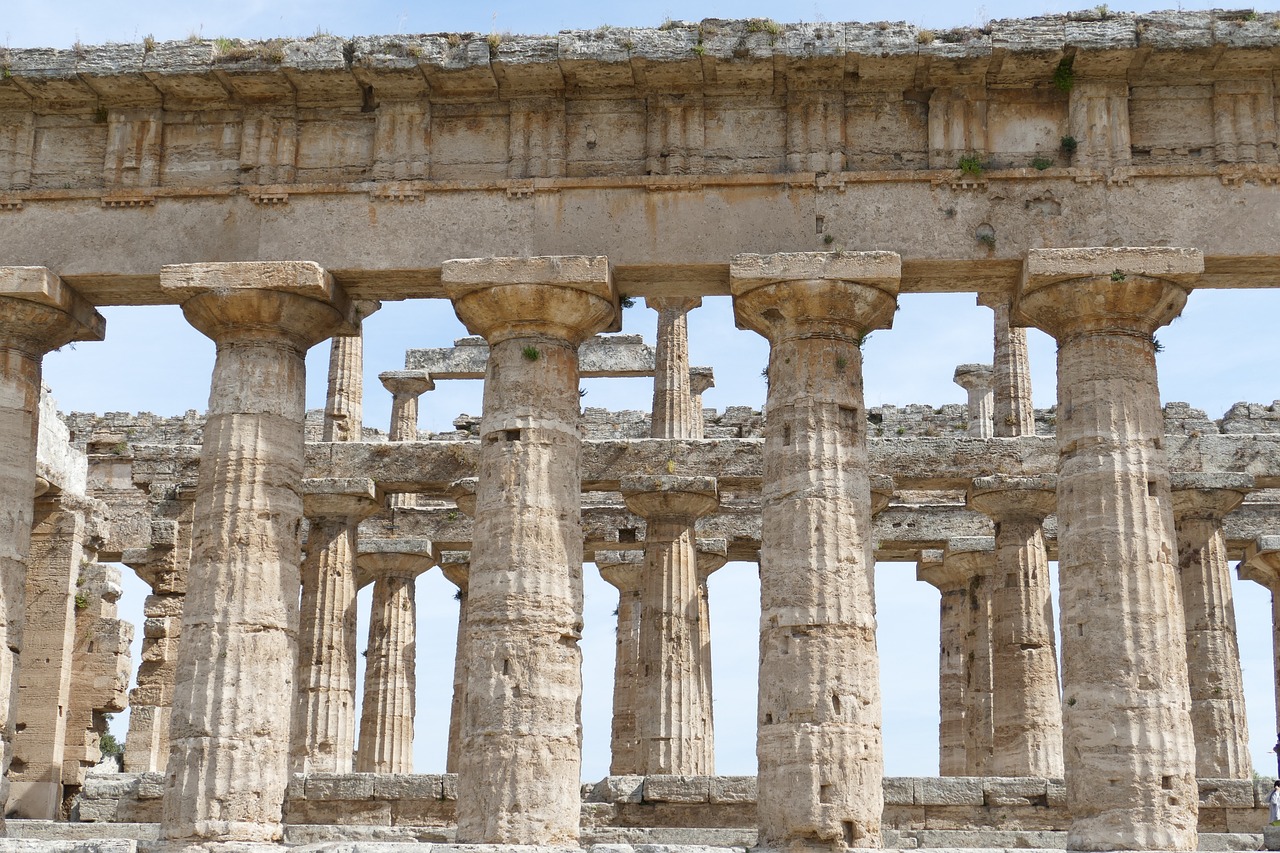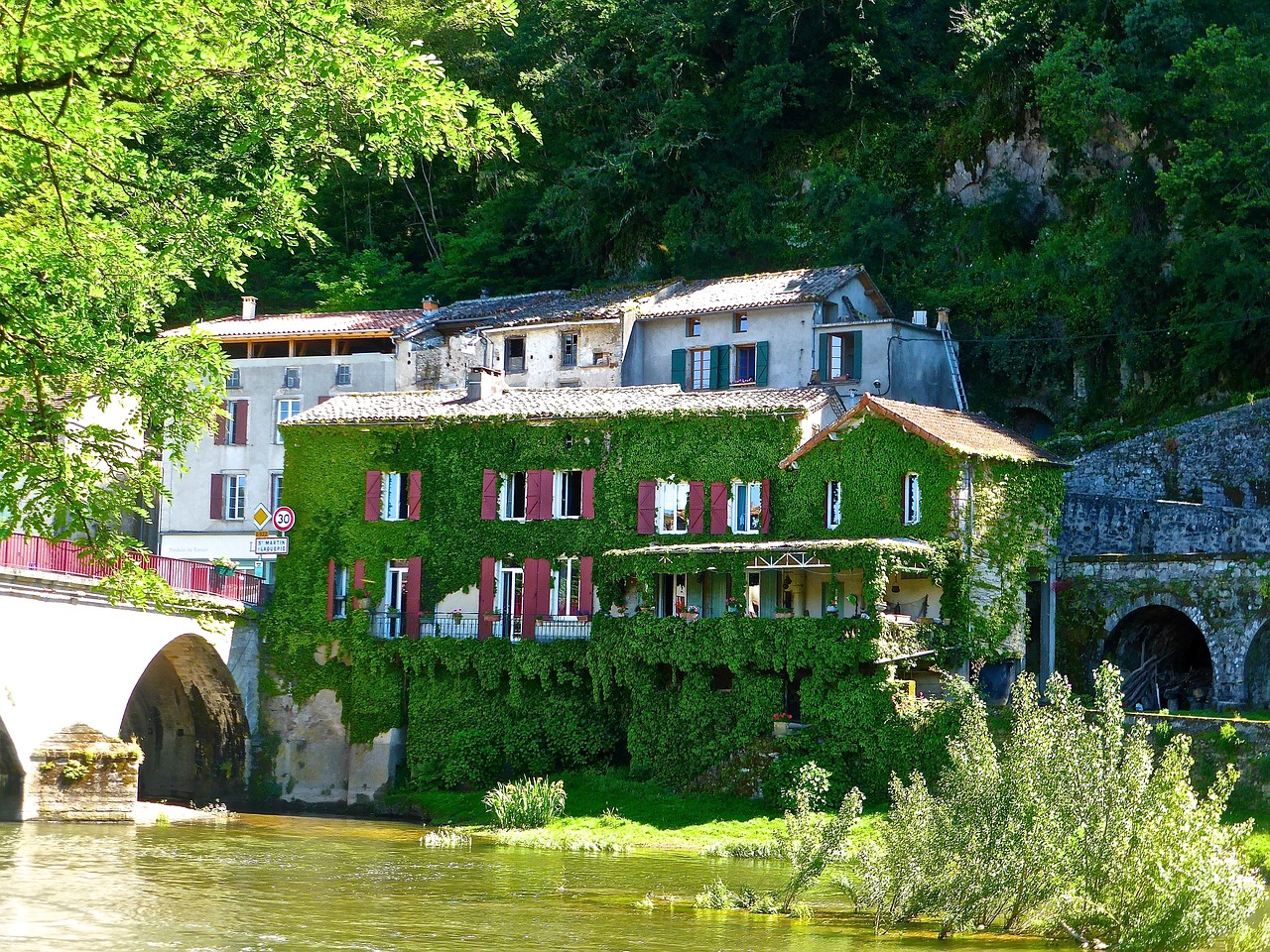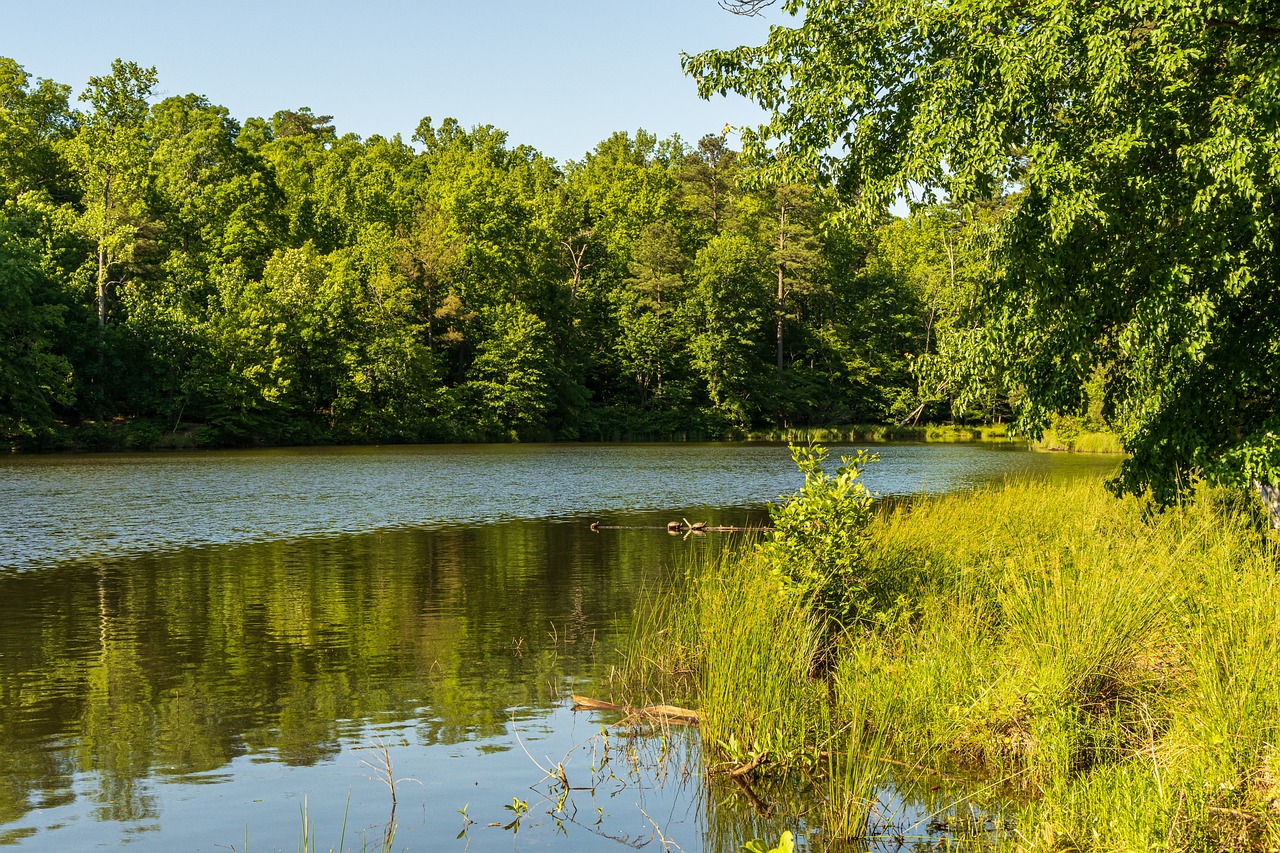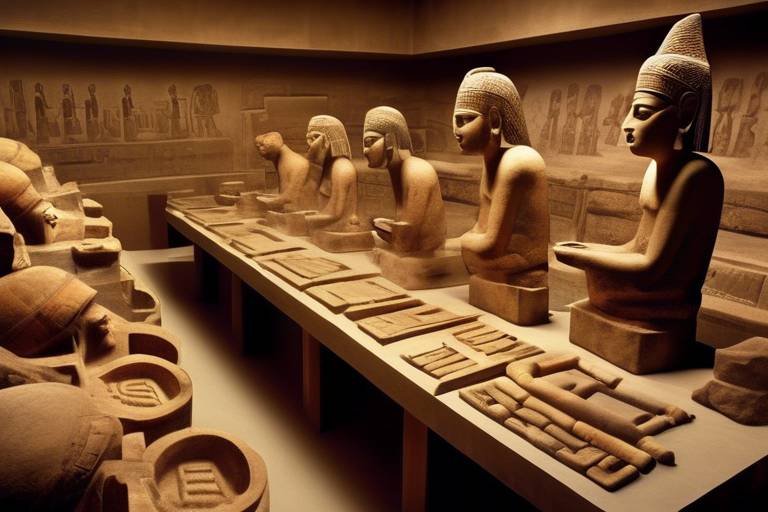The Importance of Interdisciplinary Approaches in Heritage Conservation
Heritage conservation is a complex and multifaceted endeavor that requires a diverse range of expertise and perspectives to ensure the preservation of cultural sites and artifacts for future generations. Interdisciplinary approaches play a crucial role in this process, allowing professionals from various fields such as history, architecture, anthropology, and environmental science to come together and collaborate towards a common goal.
By integrating different disciplines, heritage conservation efforts can benefit from a comprehensive understanding of the historical, cultural, social, and environmental aspects of a site. This holistic approach enables conservationists to develop sustainable strategies that not only protect the physical structures but also safeguard the intangible values and traditions associated with them.
Moreover, interdisciplinary collaboration fosters innovation and creativity in heritage conservation practices. The use of advanced technologies like 3D scanning, virtual reality, and drones enhances documentation, analysis, and restoration processes, leading to more accurate assessments and efficient preservation methods.
Community engagement is another key aspect of interdisciplinary heritage conservation. By involving local communities, indigenous groups, and stakeholders in the decision-making process, conservation projects can ensure that the cultural significance of a site is respected and preserved. This inclusive approach promotes cultural sustainability and helps to bridge the gap between heritage preservation and community development.
Furthermore, the interconnectedness of environmental conservation and heritage preservation highlights the importance of interdisciplinary approaches in addressing climate change impacts on cultural sites. By integrating environmental science into conservation practices, professionals can implement eco-friendly strategies that not only protect the heritage assets but also contribute to the overall sustainability of the surrounding ecosystem.
From an economic perspective, heritage conservation projects have the potential to generate revenue through heritage tourism, create job opportunities, and support sustainable development in local communities. Interdisciplinary collaboration can maximize the socio-economic benefits of these projects by leveraging the expertise of professionals from different fields to create innovative solutions.
In conclusion, the importance of interdisciplinary approaches in heritage conservation cannot be overstated. By bringing together diverse perspectives, innovative technologies, community engagement, environmental considerations, and economic strategies, professionals can ensure the long-term preservation and sustainable management of our cultural heritage for generations to come.

Preservation Through Diverse Perspectives
Preservation through diverse perspectives in heritage conservation is essential for gaining a comprehensive understanding of cultural heritage sites and artifacts. By incorporating multiple disciplines such as history, architecture, anthropology, and environmental science, conservation efforts can benefit from a holistic approach that considers various aspects of heritage preservation.
When different fields come together, they bring unique insights and expertise to the table, allowing for a more nuanced and sustainable preservation strategy. For example, historians can provide valuable context and narratives, architects can offer technical knowledge on structural integrity, anthropologists can contribute cultural significance, and environmental scientists can assess the impact of climate change.
This interdisciplinary collaboration not only enriches the conservation process but also fosters a sense of shared responsibility and collaboration among professionals from diverse backgrounds. It encourages creative problem-solving and innovative approaches that go beyond traditional siloed practices, leading to more effective and inclusive conservation outcomes.
Moreover, diverse perspectives in heritage conservation help in engaging with local communities and stakeholders more effectively. By incorporating their voices and knowledge into the preservation efforts, conservation projects can better reflect the cultural values and traditions of the communities connected to the heritage sites, ensuring a more sustainable and respectful approach to heritage preservation.

Challenges of Siloed Conservation Practices
Exploring the significance of utilizing interdisciplinary approaches in heritage conservation to address complex challenges, promote holistic preservation strategies, and foster collaboration among diverse fields for the safeguarding of cultural heritage sites and artifacts.
Traditional conservation practices often operate within silos, focusing solely on one discipline, which can lead to fragmented efforts and limited perspectives. When archaeologists, architects, historians, and environmental scientists work independently, they may overlook crucial aspects that require a multidisciplinary approach. These siloed practices hinder the comprehensive understanding of heritage sites and impede the development of effective conservation strategies.

Innovative Technologies in Heritage Conservation
When it comes to heritage conservation, the integration of innovative technologies has revolutionized the way we approach preservation projects. Technologies such as 3D scanning, virtual reality, and drones play a crucial role in enhancing the documentation, analysis, and restoration processes of cultural heritage sites and artifacts. These tools provide conservationists with detailed and accurate data, allowing for a more in-depth understanding of the historical significance and structural complexities of heritage sites.
3D scanning technology, for instance, enables the creation of precise digital replicas of heritage structures, facilitating the preservation of intricate details that may be at risk of deterioration over time. By capturing high-resolution images and measurements, conservationists can monitor the condition of heritage sites, identify areas of vulnerability, and plan targeted conservation interventions to ensure their long-term sustainability.
Virtual reality offers a unique opportunity to immerse stakeholders and the public in virtual tours of heritage sites, providing an interactive and engaging experience that fosters appreciation and awareness of cultural heritage. Through virtual reconstructions, individuals can explore historical contexts, architectural features, and cultural significance, even if they are unable to visit the physical site in person.
Moreover, drones have become indispensable tools in heritage conservation projects, offering aerial perspectives that aid in surveying, mapping, and monitoring heritage sites from above. The use of drones allows conservationists to access hard-to-reach areas, assess structural integrity, and detect potential threats or damages, all while minimizing risks to personnel and the site itself.
By harnessing the power of these innovative technologies, interdisciplinary teams working in heritage conservation can collaborate more effectively, make informed decisions based on accurate data, and implement sustainable preservation strategies that ensure the protection and appreciation of our cultural heritage for generations to come.

Community Engagement and Cultural Sustainability
Community engagement plays a pivotal role in ensuring the sustainability of cultural heritage sites. By involving local communities, indigenous groups, and stakeholders in heritage conservation initiatives, a sense of ownership and pride is fostered, leading to long-term preservation efforts. This engagement not only empowers communities to protect their heritage but also promotes inclusivity and diversity in decision-making processes.
Moreover, community involvement can contribute to the transmission of traditional knowledge and practices, ensuring the continuity of cultural traditions for future generations. By valuing the input of local communities, interdisciplinary heritage conservation projects can be more responsive to the needs and aspirations of those directly connected to the heritage sites.
Collaboration with communities also enhances the educational aspect of heritage conservation, as it provides opportunities for knowledge exchange and capacity building. Through workshops, training programs, and interactive events, community members can learn about the significance of their heritage and actively participate in its preservation.
Furthermore, community engagement fosters a sense of stewardship towards cultural heritage, encouraging sustainable practices and responsible tourism. By involving local residents in the management and promotion of heritage sites, a balance between conservation and socio-economic development can be achieved, ensuring the long-term viability of these valuable assets.

Environmental Conservation and Heritage Preservation
Environmental conservation and heritage preservation are intricately linked, forming a symbiotic relationship that underscores the importance of interdisciplinary approaches in safeguarding our cultural and natural legacies. By recognizing the interconnectedness of these two realms, conservation efforts can not only protect historical sites and artifacts but also contribute to broader environmental sustainability goals.
When we consider the impact of climate change on cultural heritage sites, it becomes evident that a multidisciplinary approach is essential for mitigating the risks posed by environmental factors. Rising sea levels, extreme weather events, and changing temperatures all pose significant threats to the integrity of heritage structures, necessitating innovative solutions that combine expertise from fields such as environmental science, engineering, and heritage conservation.
Moreover, the adoption of eco-friendly practices in heritage preservation can lead to positive outcomes for both cultural assets and the environment. Implementing sustainable conservation methods, such as using renewable energy sources, reducing waste generation, and promoting biodiversity in heritage sites, not only ensures their longevity but also contributes to broader environmental conservation efforts.
By integrating environmental considerations into heritage preservation projects, practitioners can create a more resilient and adaptive approach to safeguarding cultural heritage in the face of climate change challenges. This holistic perspective emphasizes the need for collaboration across disciplines to develop innovative strategies that balance the preservation of heritage with the protection of the natural environment.

Economic Viability and Heritage Tourism
When it comes to heritage conservation, the intertwining of economic viability and heritage tourism plays a crucial role in shaping the sustainability of cultural heritage sites. The economic benefits derived from heritage conservation projects extend beyond mere preservation efforts, contributing to job creation, sustainable development, and the promotion of heritage tourism. By leveraging the socio-economic potential of cultural heritage assets, interdisciplinary collaboration can unlock opportunities for local communities to thrive while safeguarding their historical and cultural legacies.
Heritage tourism, fueled by the allure of historical sites and cultural experiences, not only attracts visitors but also stimulates local economies through increased spending on accommodations, dining, and souvenirs. This influx of tourism revenue can be channeled back into conservation efforts, ensuring the long-term preservation of heritage sites and supporting the livelihoods of those involved in heritage-related activities. Moreover, heritage tourism fosters a sense of pride and identity within communities, reinforcing the value of cultural heritage and promoting a sustainable approach to tourism development.
By embracing an interdisciplinary approach that integrates economic considerations with heritage conservation strategies, stakeholders can harness the synergies between cultural preservation and tourism promotion. This collaborative effort not only safeguards the tangible and intangible aspects of cultural heritage but also creates a positive feedback loop where economic prosperity sustains heritage preservation, and vice versa. Through innovative initiatives that balance economic viability with cultural significance, heritage tourism can become a driving force for sustainable development and cross-cultural exchange.

Policy Development and Legal Frameworks
In the realm of heritage conservation, the development of robust policies and legal frameworks plays a pivotal role in safeguarding cultural heritage sites and artifacts for future generations. These policies serve as the guiding principles that dictate how conservation efforts should be carried out, ensuring that the integrity and authenticity of heritage assets are preserved. Through interdisciplinary research and collaboration, experts from various fields can contribute their unique perspectives to shape these policies in a way that addresses the complexities of heritage preservation.
Legal frameworks, on the other hand, provide the necessary regulatory mechanisms to enforce heritage conservation policies and hold accountable those who threaten the integrity of cultural heritage. By advocating for stringent laws that protect heritage sites from vandalism, looting, and unauthorized alterations, interdisciplinary teams can ensure that the legal landscape supports the sustainable preservation of cultural treasures.
Moreover, the intersection of policy development and legal frameworks in heritage conservation necessitates a deep understanding of governance structures and international conventions that govern the protection of cultural heritage. By engaging with policymakers, legal experts, and heritage professionals, interdisciplinary collaborations can influence decision-making processes and advocate for the implementation of effective conservation strategies.

Educational Initiatives and Capacity Building
Exploring the significance of utilizing interdisciplinary approaches in heritage conservation to address complex challenges, promote holistic preservation strategies, and foster collaboration among diverse fields for the safeguarding of cultural heritage sites and artifacts.
Highlighting the value of incorporating multiple disciplines such as history, architecture, anthropology, and environmental science in heritage conservation efforts to gain comprehensive insights and develop sustainable preservation methods.
Discussing the limitations of traditional, discipline-specific conservation approaches in addressing the multifaceted issues related to heritage preservation, and the need for interdisciplinary collaboration to overcome these challenges.
Exploring the role of cutting-edge technologies like 3D scanning, virtual reality, and drones in interdisciplinary heritage conservation projects, and how these tools enhance documentation, analysis, and restoration processes.
Examining the importance of engaging local communities, indigenous groups, and stakeholders in interdisciplinary heritage conservation initiatives to ensure cultural sustainability, promote inclusivity, and respect diverse perspectives.
Analyzing the interconnectedness of environmental conservation and heritage preservation, and the benefits of interdisciplinary approaches in mitigating climate change impacts on cultural heritage sites and promoting eco-friendly conservation practices.
Discussing the economic benefits of heritage conservation projects, including heritage tourism, job creation, and sustainable development, and how interdisciplinary collaboration can maximize the socio-economic potential of cultural heritage assets.
Exploring the role of interdisciplinary research and collaboration in shaping heritage conservation policies, advocating for legal frameworks that protect cultural heritage, and addressing governance issues to ensure effective preservation strategies.
Highlighting the significance of interdisciplinary educational programs, training opportunities, and capacity-building initiatives in preparing future conservation professionals to work across disciplines and address complex challenges in heritage preservation.
Q: Why are interdisciplinary approaches important in heritage conservation?
A: Interdisciplinary approaches bring together diverse expertise to tackle complex issues, leading to more holistic and sustainable preservation strategies.
Q: How can community engagement benefit heritage conservation efforts?
A: Engaging local communities ensures cultural sustainability, promotes inclusivity, and respects diverse perspectives, enhancing the effectiveness of conservation initiatives.
Q: What role do innovative technologies play in heritage conservation?
A: Cutting-edge technologies like 3D scanning and virtual reality enhance documentation, analysis, and restoration processes, improving the efficiency and accuracy of conservation projects.
Q: How does heritage conservation contribute to economic development?
A: Heritage conservation projects, including heritage tourism, create job opportunities, promote sustainable development, and contribute to the socio-economic growth of communities.
Frequently Asked Questions
- What are interdisciplinary approaches in heritage conservation?
Interdisciplinary approaches in heritage conservation involve integrating knowledge and expertise from various fields such as history, architecture, anthropology, and environmental science to address complex challenges and promote holistic preservation strategies.
- Why is community engagement important in heritage conservation?
Community engagement is crucial in heritage conservation as it ensures the involvement of local communities, indigenous groups, and stakeholders in decision-making processes, promotes cultural sustainability, and fosters inclusivity and diverse perspectives in conservation initiatives.
- How do innovative technologies contribute to heritage conservation?
Innovative technologies like 3D scanning, virtual reality, and drones play a significant role in heritage conservation by enhancing documentation, analysis, and restoration processes, enabling more efficient and accurate preservation of cultural heritage sites and artifacts.
- What is the relationship between environmental conservation and heritage preservation?
The relationship between environmental conservation and heritage preservation highlights the interconnectedness of preserving cultural heritage sites and mitigating climate change impacts, emphasizing the need for interdisciplinary approaches to promote eco-friendly conservation practices and sustainable management of heritage resources.
- How can interdisciplinary collaboration benefit heritage tourism?
Interdisciplinary collaboration in heritage conservation projects can enhance the economic viability of heritage tourism by creating job opportunities, promoting sustainable development, and maximizing the socio-economic potential of cultural heritage assets, thereby contributing to the local economy and promoting cultural heritage awareness.



















